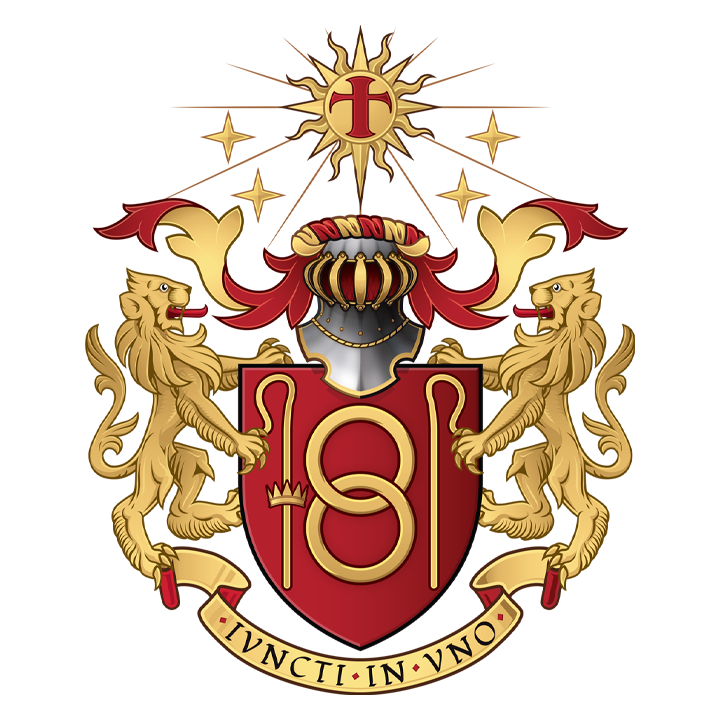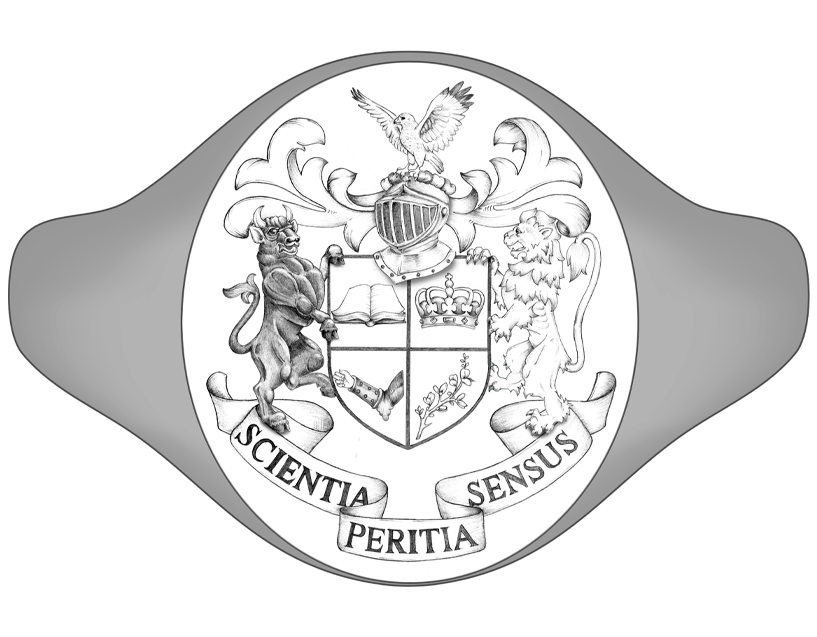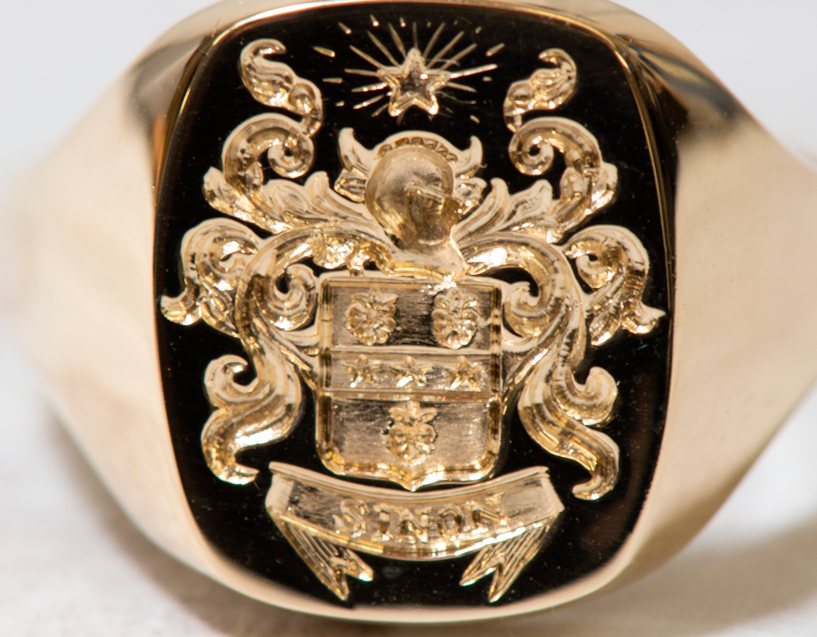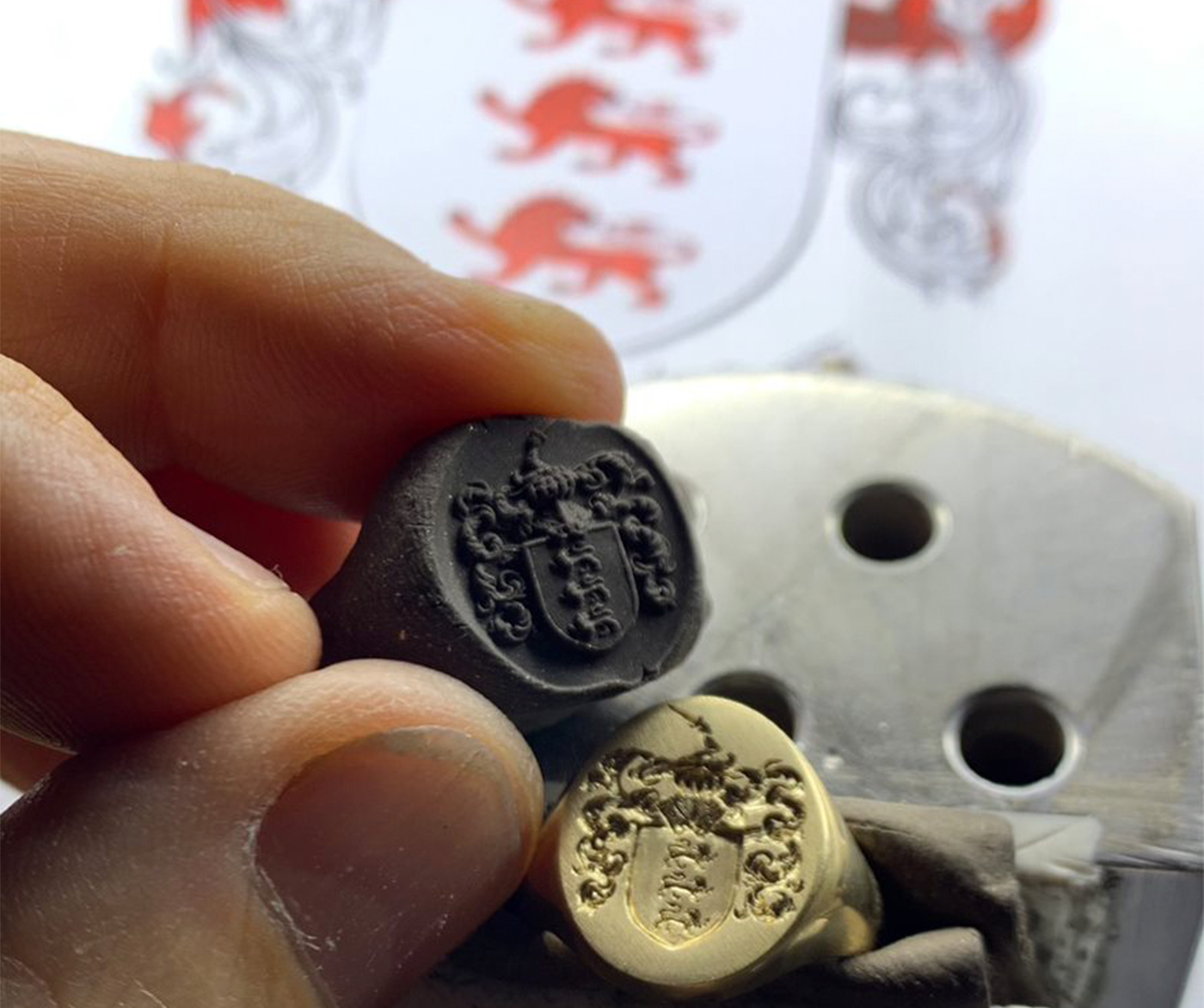Commonly mistaken for the wider heraldic achievement, a Coat of Arms in fact only refers to the symbolic motifs that sit within the shield or escutcheon. This unique representation of a family or surname, these Coats of Arms often include symbols designating rank, appointment, or royal orders.
Following our guide to The History of Heraldry, we delve a little deeper and deconstruct the elements behind Coats of Arms.


There are three key components:
The Field: The background of the shield upon which symbols are placed. Fields can be designed differently with multiple divisions and variations.
The Charges: Heraldic symbols that sit atop the Field. Charges are often ‘ordinaries’ or standard geometric designs, but can also refer to common symbols such as crosses, animals, flowers, body parts, celestial symbols, or harps. These symbols can be found on everything from the heraldic crosses of the Kingdom of Jerusalem to the royal lions of Richard the Lionheart and Geoffrey Plantagenet’s Coats of Arms. These symbols often have meaning, with lions traditionally representing courage, books as knowledge, and crosses as faith.
The Rules of Tincture: Coats of Arms follow strict rules around usage of metals and colours. There are traditionally seven tinctures: gold, silver, red, blue, green, black, purple, plus three stains: blood red, mulberry, and burnt orange. In addition there are also ‘furs’; patterns intended to mimic the coats of weasels or squirrels. The College of Arms dictate that metals cannot sit atop metals and colours cannot sit atop colours, with some exceptions to the rule.


As part of the wider heraldic achievement, there are elements that support and surround the Coat of Arms:
Supporters: Often symbolised by lions, unicorns, people, or buildings, Supporters sit either side of the Coat of Arms, and were given usually as a recognition for a major achievement or to designate status.
Compartments: Usually depicted as a small landscape base upon which the Supporters stand.
Helm: These helmets represent status, with open visors depicting nobility and closed visors depicting gentry. Historically, heraldic achievements for women and clergymen would not include a Helm, as they did not fight in battle.
Torse: A piece of fabric sitting above the Helm (or in the case of royalty or high nobility, a Coronet).
Crest: Originating from knights who adorned their helmets with symbols during tournaments, a Crest sits atop the Torse.
Motto: Traditionally in Latin, these sit underneath the Coat of Arms are often chosen by the family receiving the heraldic achievement.


Once reserved for nobility, many now create their own ‘unofficial’ Coat of Arms outside the jurisdiction of the College of Arms, incorporating their own personal and familial symbols. Why not explore our Crest & Monogram search? To begin the process of designing a bespoke Rebus signet ring engraved with your very own custom Coat of Arms, please email info@rebussignetrings.co.uk or book an appointment at our Hatton Garden workshop or via Zoom.


